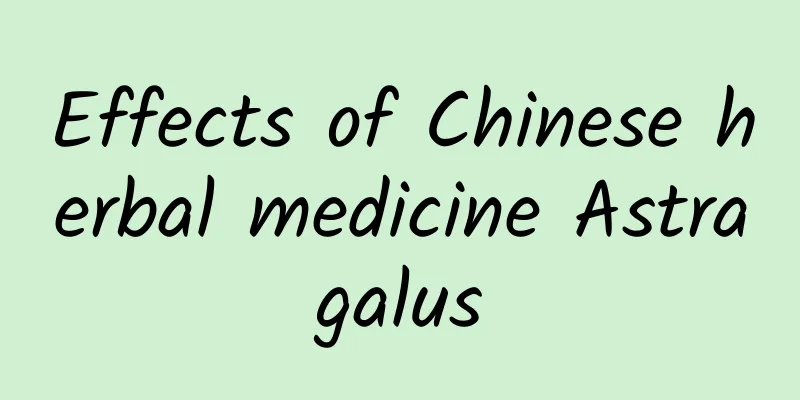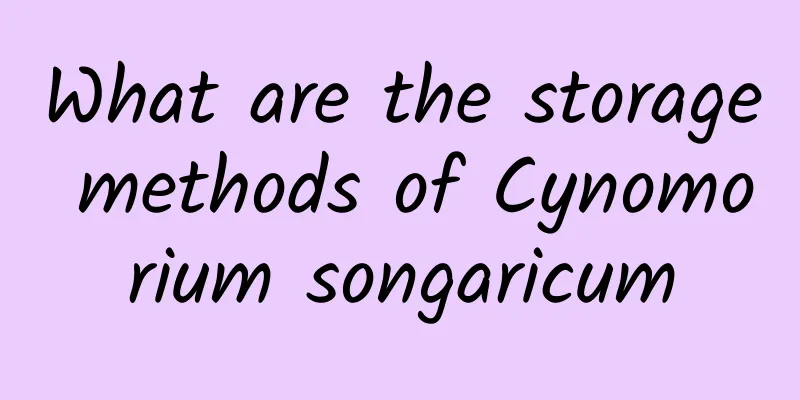What are the effects of Dendrobium?

|
Many Chinese works have recorded the medicinal functions of Dendrobium officinale, such as: "Shennong's Herbal Classic", "Dictionary of Chinese Medicine", etc. To sum up, it can nourish yin and essence, strengthen physical fitness, nourish the spleen and stomach, protect the liver and promote bile secretion, relieve internal heat, strengthen tendons and bones, promote circulation, lower blood sugar, inhibit tumors, brighten the eyes, etc. It has many functions and the effects are very effective. Many famous doctors in history have used it to help some people. At the same time, they basically believe that Dendrobium candidum is an excellent product that can strengthen the body and replenish the body. However, due to its fame, some unscrupulous merchants in the market ignore consumers and raise prices by selling inferior products. Let's talk about the effects and functions of Dendrobium officinale and the tricks in its price. 1. Efficacy and effects 1 Nourishing Yin The Chinese Pharmacology Dictionary states that it "specializes in nourishing the qi and fluid of the lungs and stomach, and when the qi and fluid are prosperous, the kidney water is naturally produced." It is said that it is good at nourishing yin and producing body fluid, and treating various symptoms of yin deficiency and body fluid deficiency. 2. Improve your physical fitness Dendrobium officinale has the function of nourishing yin and blood. The "Materia Medica" of the Qing Dynasty said that Dendrobium officinale can replenish the kidney and accumulate essence, nourish stomach yin, and increase qi and strength; Dendrobium officinale contains rich polysaccharides. Experiments have shown that Dendrobium officinale polysaccharides have the effect of enhancing immune function and can enhance the phagocytic ability of peritoneal macrophages on chicken red blood cells. 3. Nourishes the spleen and stomach Dendrobium candidum is a medicine that benefits the stomach and produces body fluid. It is recorded in "Shennong's Herbal Classic" and "Bencao Zaixin". People call it "gastrointestinal medicine" and it is a commonly used medicine for treating epigastric pain and upper abdominal distension. Modern experiments have confirmed that Dendrobium candidum has a good inhibitory effect on Helicobacter pylori, a common pathogen in spleen and stomach diseases, and is helpful in treating Helicobacter pylori-positive diseases such as atrophic gastritis, superficial gastritis, and duodenal ulcers. At the same time, oral consumption of Dendrobium candidum decoction can promote the secretion of gastric juice, enhance the stomach's emptying capacity, and aid digestion. 4. Protect liver and promote bile secretion Dendrobium officinale has a good choleretic effect. Doctors of all dynasties have believed that "Dendrobium officinale" has the effect of nourishing liver yin and is an important medicine for treating various liver and gallbladder diseases. It can be used to treat hepatitis, cholecystitis, gallstones and other liver and gallbladder diseases. 5. Clear away heat "Supplement to Compendium of Materia Medica" and "Explanation of Materia Medica" respectively record "clears the stomach and eliminates empty heat" and "eliminates empty heat in the stomach and hemorrhoids." Compared with ordinary heat-clearing drugs, the false heat cleared by Dendrobium candidum is completely a false heat, which is characterized by yin deficiency and excessive heat. Pharmacological experiments have shown that Dendrobium candidum can significantly reduce the peak fever and temperature response index of heat-prone rabbits and shorten the heat-generating time. 6. Strengthens muscles and bones After people enter middle age, "the human yin energy is halved" (Zhu Danxi). The body's yin essence begins to weaken, and the muscle and bone functions gradually decline. Dendrobium candidum can nourish the yin fluid, and the yin fluid can lubricate the joints, thereby achieving the effect of strengthening muscles and bones, lubricating joints, and enhancing resistance to rheumatism. Modern pharmacological research shows that Dendrobium candidum can improve stress resistance and has good anti-fatigue and hypoxia resistance effects. 7. Promote circulation Dendrobium candidum can nourish yin, moisten the meridians, dilate blood vessels, and thus promote blood circulation. Experimental results show that Dendrobium can significantly improve blood stasis symptoms, lower blood cholesterol and triglycerides, increase high-density lipoprotein cholesterol levels, and can treat cardiovascular and cerebrovascular diseases. 8. Lowers blood sugar Traditional Chinese medicine believes that the occurrence of diabetes is mainly based on kidney yin deficiency and early heat of the lungs and stomach, and its pathological characteristics are deficiency of both qi and yin. Dendrobium candidum has the function of nourishing yin, clearing away heat and moistening dryness, and has been a special medicine for the treatment of diabetes since ancient times. Clinical studies have shown that Dendrobium candidum can not only enhance insulin activity, but also significantly lower blood sugar levels and restore blood sugar to normal. 9. Tumor Inhibition Dendrobium candidum has a killing effect on certain cells of human lung cancer, ovarian cancer and promyelocytic leukemia, and has strong anti-tumor activity. Clinical time shows that Dendrobium officinale can be used as an adjuvant treatment for malignant tumors, which can improve the symptoms of tumor patients, reduce the side effects of radiotherapy and chemotherapy, enhance immunity, improve the quality of life, and prolong survival time. 10 Bright Eyes Traditional Chinese medicine believes that the essence of the five internal organs is injected into the eyes through the meridians, and the liver "opens up the eyes". The physiology and pathology of the eyes are closely related to the vigorousness of the liver's yin essence. Dendrobium officinale has the function of nourishing yin and nourishing the eyes, and has been regarded as an excellent product for eye care by doctors of all dynasties. Modern pharmaceutical research has confirmed that Dendrobium candidum not only has a delaying effect on the prevention and treatment of cataracts, a common eye disease in the elderly, and can maintain the transparency of the lens by 36%, but also has an inhibitory or corrective effect on abnormal changes in enzyme activity caused by galactose. 11. Nourish your skin After the human body enters middle age, the yin fluid in the body decreases, which accelerates the aging of the skin, causing it to darken or become wrinkled. Dendrobium candidum contains a large amount of mucus, which has a moisturizing and nourishing effect on human skin. 12. Longevity "Shennong's Herbal Classic" lists Dendrobium as a commercial medicine with the effect of "lightening the body and prolonging life". Modern research shows that Dendrobium candidum contains a variety of trace elements, which are closely related to human health and longevity. The anti-aging effect of Dendrobium candidum on the human body is more extensive and comprehensive than that of general drugs. 2. Price tricks 1. Quality determines price (1) Content: The main content of Dendrobium officinale is dendrobium polysaccharide. The higher the content of dendrobium polysaccharide, the better the nourishing effect. The higher the content of mucus juice, the stickier it is in the mouth and teeth, which indicates that the polysaccharide content is high. When consumers choose Dendrobium officinale, they should carefully confirm the polysaccharide content of the Dendrobium. Correspondingly, the higher the polysaccharide content, the more expensive the price and the better the effect. (2) Specifications: The main medicinal part of Dendrobium officinale is the stem, and its quality is judged by: low fiber and rich in mucus. Therefore, the thicker the stems of Dendrobium officinale, the higher the price. The fuller and smoother the processed Dendrobium officinale is, the better and the higher the price. (3) Color: Dendrobium officinale is named after its iron green color. The more iron green it looks, the higher the price will naturally be. The areas between the nodes are black, called black nodes, and there are rust spots on the surface. 2. Variety determines price. There are many types of Dendrobium, with more than 1,500 species in the world and about 76 species in my country. Among them, more than 40 species are used as medicine, the most common ones are Dendrobium officinale, Dendrobium annularis, Dendrobium whip, Dendrobium candidum, Dendrobium nobile, etc. Dendrobium officinale is the best among all Dendrobiums and the variety with the highest medicinal value. The medicinal effects of ordinary varieties of Dendrobium are far inferior to it. Dendrobium officinale has a high content of polysaccharides and has a strong health-preserving and yin-nourishing effect. It has been highly praised by famous doctors of all dynasties, so its price is naturally quite high. Some unscrupulous vendors use other dendrobiums to impersonate Dendrobium officinale and sell them at low prices. Although they have certain efficacy, the effects cannot be compared with the genuine Dendrobium officinale. 3. The source determines the price. Wild Dendrobium officinale grows on semi-shaded and moist rocks, tall ancient trees, and cliffs in the mountains at an altitude of 1,600 meters. It prefers a warm and humid climate and a semi-shaded and semi-sunny environment. Currently, wild Dendrobium officinale is on the verge of extinction and is difficult to collect, so the price of wild Dendrobium officinale is expensive. In order to meet market demand, in addition to artificial greenhouse cultivation, the growth environment of Dendrobium officinale can also be simulated to cultivate wild-simulated Dendrobium officinale. The efficacy of simulated wild Dendrobium officinale is more excellent than that cultivated in greenhouses, so the price of simulated wild Dendrobium officinale is relatively higher than that of artificial greenhouse cultivation. |
<<: How much do you know about the benefits of clove leaves?
>>: What are the hazards of applying Chinese medicine on the face
Recommend
How to eat Solanum nigrum leaves
my country's food culture is very rich and co...
Suoyangyin side effects
As the name suggests, Suoyangyin is a medicinal h...
The Earth has been rotating for 4.6 billion years without stopping. Where does the power come from?
In the past, humans did not understand why there ...
The efficacy and function of the arrow ball [picture]
I believe many people are familiar with the Chine...
Is the mugwort cushion effective?
Mugwort cushions are effective because they can r...
Is honeysuckle effective in treating thyroid nodules?
Thyroid nodules are a common neck disease, and th...
No. 1 in the world! When it comes to "conquering the stars and the sea", the Chinese have never been better than anyone else!
On April 29, 2021, China launched the core module...
China's luxury goods market may be saturated and is facing a rational "cooling down" trend
Introduction: Although Chinese consumers are stil...
A basket of important achievements! China's Sky Eye challenges the standard model of interstellar magnetic field
The "big pot" in Guizhou has recently p...
The first flight was successful!
At 12:12 Beijing time on July 27, 2022, the Lijia...
Trivia | What can you use to ward off vampires? Garlic?
What to use to ward off vampires, garlic? Written...
Is there a big "X" in the universe? It's a unique radio galaxy formed by a supermassive black hole!
Jets of galaxies are extending out into space, an...
The efficacy and function of mouse ears
Do you know what mouse ears are? If you know, do ...
Asian Winter Science Popularization Issue 5丨The "Breathing Magic" in Ice and Snow Sports and the "Healthy Code" of Cardiovascular Diseases
First instance: Sun Yu Second trial: Suo Yingxing...
How long should dandelion be applied externally?
It takes about 30 minutes or 60 minutes to apply ...









